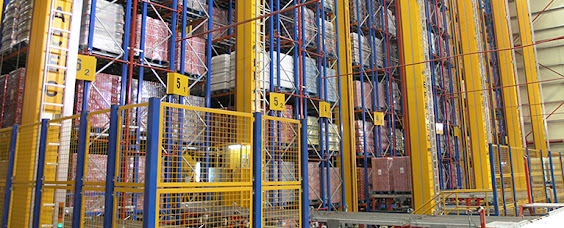Efficient Material Handling with Conveyors: A Comprehensive Guide
In today's fast-paced industrial environment, efficient material handling is essential to maintaining a productive and competitive edge. Conveyors, often regarded as the backbone of material handling systems, offer cost-effective, reliable, and adaptable solutions for transporting goods throughout a facility. This comprehensive guide will explore the different types of conveyors, their benefits, and best practices for their implementation and maintenance.
Types of Conveyors
Belt Conveyors: Utilizing a continuous belt to transport materials, belt conveyors are suitable for moving bulk items, boxes, and irregularly shaped objects. They can be designed with different belt materials, widths, and inclines, making them adaptable for various applications.
Roller Conveyors: With a series of rollers mounted on a frame, roller conveyors can transport items using gravity or motor-driven mechanisms. They are ideal for moving flat-bottomed items like boxes and pallets, providing a smooth and efficient transfer.
Chain Conveyors: Employing a chain mechanism to move materials, chain conveyors are well-suited for handling heavy loads, high-temperature products, and abrasive materials. They can be customized with various attachments and can operate in harsh environments.
Pneumatic Conveyors: Using air pressure to move bulk materials, pneumatic conveyors are perfect for transporting powders, granules, and other small particles. They offer a dust-free, enclosed, and energy-efficient solution.
Benefits of Conveyor Systems
Improved Productivity: Conveyors can significantly increase a facility's throughput by automating material transport and reducing manual labor. Workers can focus on more value-added tasks, resulting in higher overall productivity.
Enhanced Safety: By minimizing the need for manual handling, conveyors reduce the risk of workplace accidents, injuries, and strains. This leads to a safer working environment and potentially lower insurance costs.
Greater Efficiency: Conveyor systems optimize the flow of materials through a facility, reducing bottlenecks and delays. This can contribute to more efficient production processes and shorter lead times.
Scalability: Conveyors can be easily expanded, reconfigured, or integrated with other systems to accommodate growth or changes in production requirements.
Lower Operational Costs: By automating material transport, conveyors can help reduce labor costs and the need for additional equipment like forklifts.
Best Practices for Implementation and Maintenance
Proper Planning: Before installing a conveyor system, thoroughly assess your facility's needs, layout, and objectives. This will help you select the most appropriate conveyor type, design, and configuration.
Invest in Quality Equipment: High-quality conveyors will provide better performance, reliability, and longevity, ultimately reducing long-term costs associated with maintenance and replacements.
Regular Maintenance: Schedule routine inspections and maintenance to ensure your conveyor system remains in optimal condition. This can help prevent costly downtime and extend the life of your equipment.
Employee Training: Provide comprehensive training for employees who will be operating or maintaining the conveyor system. This can help prevent accidents, reduce downtime, and ensure the system is used effectively.
Monitor and Evaluate Performance: Regularly assess the performance of your conveyor system and make adjustments as needed to optimize efficiency, productivity, and safety.
Conclusion
Conveyor systems play a crucial role in modern material handling, offering numerous benefits such as increased productivity, enhanced safety, and lower operational costs. By understanding the different types of conveyors, their applications, and best practices for implementation and maintenance, businesses can make informed decisions that will improve their overall material handling processes. With the proper planning, investment, and ongoing care, conveyors can provide a long-lasting, efficient solution for transporting goods throughout a facility.


.png)

Comments
Post a Comment